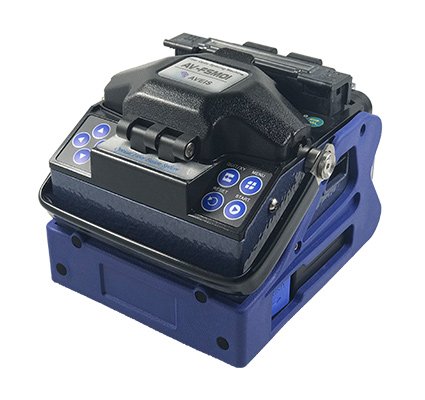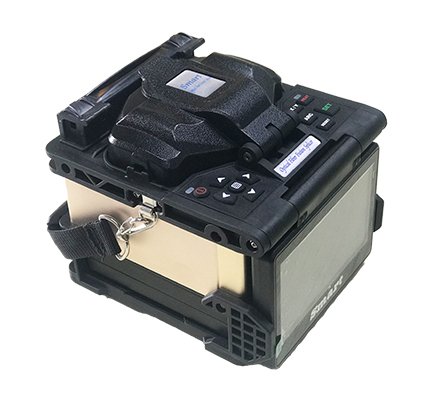
Currently, there is two aligning system used for fusion splicer which is core alignment system and cladding alignment systems.
Core Alignment Fusion Splicer
Core alignment splicing is currently the most commonly used fusion splicing technology. Core alignment splicers use a combination of image and light detection systems that “view” the fiber cores to measure and monitor core position during the alignment process.
This provides for precise fiber alignment, resulting in a typical splice loss of the only 0.02dB. Compared to cladding alignment, it is more expensive, more powerful and flexible, and less sensitive to variations in the cable and environment. Core alignment fusion splicers have long been the preferred method for CATV installations, backbone networks, specialty fiber applications, and optical components manufacturing largely because of their high accuracy and reliability.
Cladding Alignment Fusion Splicer
is a passive alignment that relies on the accurate pre-alignment of fiber V-grooves that grip the outer surface or cladding of the fiber? Fibers are adjusted inwards and outwards. The advantage of this method is that the technology required is low cost and fast, so it is still utilized on low-cost field fusion splicers and ribbon splicers. Fiber position, core-cladding eccentricity and mode field diameter (MFD) influence the effectiveness of cladding alignment and subsequent splice performance. Fiber position is influenced by contamination on the fiber or V-grooves. While the operator controls this parameter, core-cladding eccentricity and MFD are fiber manufacture parameters, and typically come into consideration when splicing new to old fibers and also dissimilar fibers such as single mode G652.D to G 657.A.
Conclusion
In long distance project, core to core alignment less loss than cladding alignment, and the cladding alignment more suits short distance like FTTH project If you both do FTTX and FTTH projects, please check the AV-FSM01 or 6 motors AV-FSM02




